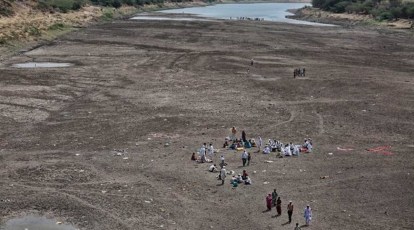Water levels in Marathwada dams plummet to 14% amid sweltering heat

Water levels in Marathwada dams plummet to 14% amid sweltering heat
Chhatrapati Sambhaji Nagar: As temperatures soar and summer intensifies, Marathwada finds itself grappling with a concerning drop in water levels across its major, medium, and minor irrigation projects.
Reports indicate that these projects collectively exhibit a mere 14% live storage as of Sunday, a stark contrast to the 49% storage recorded during the same period last year.
Of particular concern are the 44 major projects in the region, primarily responsible for meeting drinking water requirements. These reservoirs currently hold only 14% live storage, a significant decline from the 52% stock observed last year. Among these, the Jayakwadi major irrigation project, crucial for sustaining Chhatrapati Sambhaji Nagar and surrounding areas, stands at less than 10% capacity, despite having over a month before the onset of the next rainy season.
Authorities at the Godavari Marathwada Irrigation Development Corporation (GMIDC) have indicated that several key dams still possess enough water to fulfill drinking water needs until June. They emphasize the prioritization of drinking water reserves within these reservoirs, ensuring continued access for residents, barring exceptional circumstances of exceptionally low rainfall.
While sporadic showers in April provided some relief, these instances failed to replenish water resources significantly due to the prevailing summer heat and reduced intensity of rainfall. Though such weather conditions minimize evaporation losses to some extent, they do little to offset the overall decline in water levels.
In response to the looming water crisis, authorities have also taken steps to safeguard the availability of fodder for livestock. With over 6.33 lakh livestock in the district, measures have been implemented to ensure an adequate supply of fodder for the next three to four months, mitigating potential hardships for farmers and their animals.









